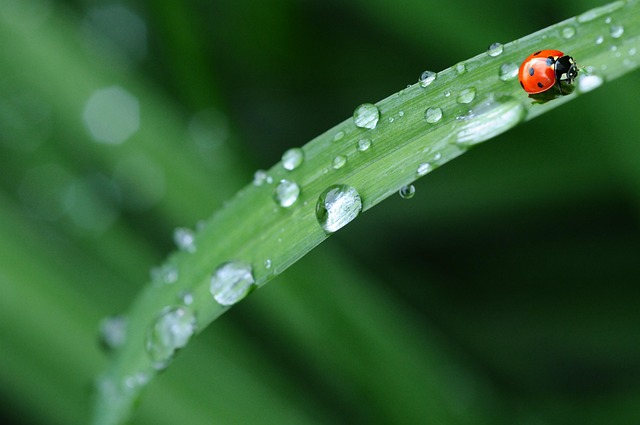Regular ant infestation inspections are crucial for early detection and effective integrated pest management (IPM). Look for signs like trails and worker ants, identify specific species for targeted strategies, and seal entry points. Implement preventive measures like cleanliness and caulk to reduce risk. Use traps, baits, biological, cultural, physical, and chemical controls minimising environmental impact. Consistently monitor throughout the year, especially during active seasons, for continuous surveillance and swift response to ant activity.
In the quest for year-round safety, integrated pest inspection and prevention plans are essential. Ant infestations pose significant risks, with various species exhibiting unique behaviors and requiring tailored strategies. Understanding these intricacies is crucial for effective management. This article guides you through developing a comprehensive pest prevention strategy, explores integrated pest management techniques, and provides a detailed year-round inspection plan, complete with scheduling and best practices, to help you stay ahead of ant infestations.
Understanding Ant Infestations: Identifying Signs and Common Species
Ant infestations can go unnoticed for extended periods, making early detection crucial for effective integrated pest management. Regular inspections are key to identifying signs that may indicate an ongoing issue. Look for small, consistent trails leading from food sources to potential nest sites, often along walls or under floors. Worker ants are easily visible and may be seen scurrying about, while their distinctive scent is another telltale sign.
Identifying specific ant species is essential as different types have varying behaviors and preferences. Common indoor species include the odorous house ant and the carpet ant. The former leaves a distinct fruity odor, while the latter prefers dark, humid areas like crawl spaces. Understanding these habits allows for targeted prevention strategies, such as sealing entry points, maintaining cleanliness, and using baits or natural repellents specific to each species.
Developing a Comprehensive Pest Prevention Strategy
Developing a Comprehensive Pest Prevention Strategy is essential for maintaining year-round safety, particularly when it comes to ant infestations. The first step involves identifying potential entry points and vulnerabilities in your structure. This includes checking for cracks, gaps, or openings that ants might exploit, such as around utility pipes, doors, and windows. Regular inspections are crucial; schedule routine assessments, especially during seasonal changes, to catch any early signs of an ant infestation inspection.
Implementing preventive measures should be multi-faceted. Start by maintaining a clean environment, eliminating potential food sources like spilled foods or garbage. Seal entry points with caulk or other appropriate materials, and consider using insect traps or barriers as additional defenses. Regularly tend to your garden or landscape, removing any overripe fruit or decaying plant matter that might attract ants. Integrating these strategies will create a robust pest prevention plan, significantly reducing the risk of ant infestations.
Integrated Pest Management Techniques for Effective Control
Integrated Pest Management (IPM) offers a holistic approach to ant infestation inspection and control, moving beyond mere elimination. This strategy involves a combination of methods, including biological, cultural, physical, and chemical controls, to manage pests effectively while minimizing environmental impact. By adopting IPM techniques, professional inspectors can create year-round safety plans that target ants and other pests at every stage of their life cycle.
Regular monitoring and inspection are key components of successful IPM. This includes identifying ant entry points, understanding their behavior, and utilizing traps and baits strategically. Cultural controls, such as maintaining proper sanitation and sealing access points, deprive ants of food and shelter, reducing their population over time. Biological controls involve introducing natural predators or parasites to target specific ant species, while physical methods like heat treatments or steam can be effective for localized infestations. Chemical interventions should be the last resort, applied sparingly and with care to avoid environmental contamination and potential health risks.
Year-Round Inspection Plan: Scheduling and Best Practices
Maintaining a year-round pest inspection plan is essential for proactive ant infestation management. Scheduling regular checks throughout the year ensures that any potential ant invasion is detected early, allowing for swift and effective prevention measures. Best practices include establishing a consistent inspection routine, particularly during spring and summer when ants are most active. Outdoor areas around the property should be scrutinized for ant trails or nests, while indoor inspections focus on kitchens, bathrooms, and basements—common entry points for ants.
For optimal results, integrate visual inspections with advanced monitoring systems like trap stations strategically placed in high-risk zones. This dual approach provides continuous surveillance, enabling you to respond promptly to any ant activity. Remember that consistency is key; regular maintenance ensures a pest-free environment year after year, safeguarding your space from the relentless march of ants.
Implementing an integrated pest inspection and prevention plan is key to maintaining a year-round safe environment. By understanding ant infestations, developing strategic prevention methods, and adopting effective management techniques, you can effectively control these pests. Regular, scheduled inspections are crucial, ensuring any potential issues are identified early on. Remember, proactive measures are always better than reactive ones when it comes to ant infestation inspection and management.
